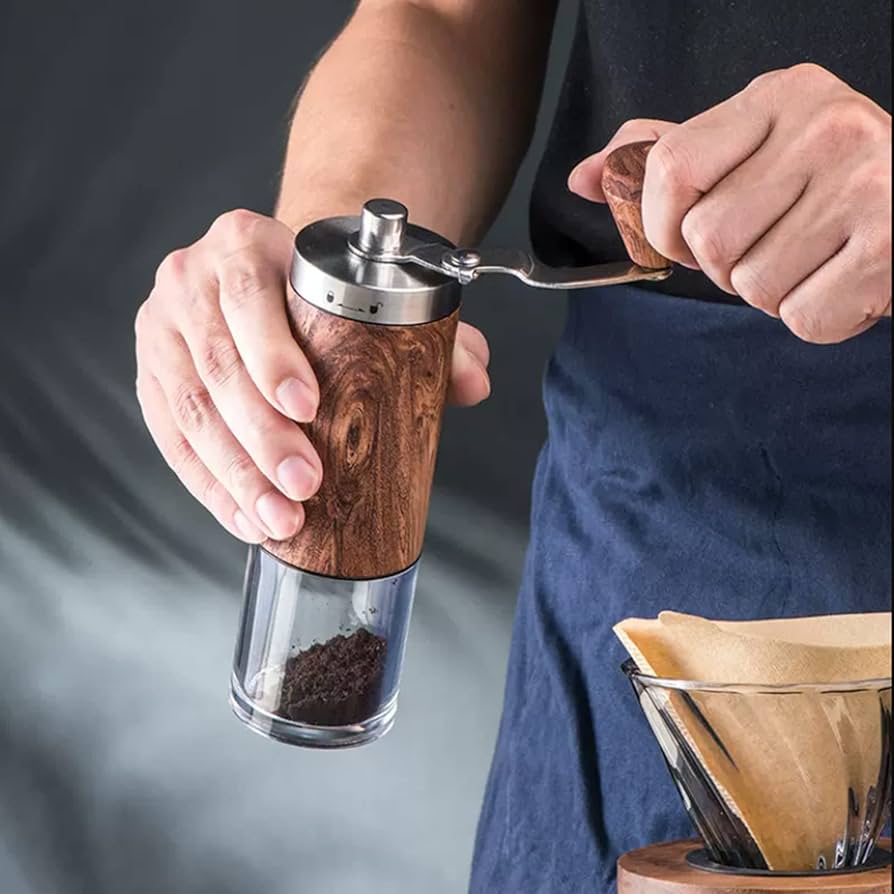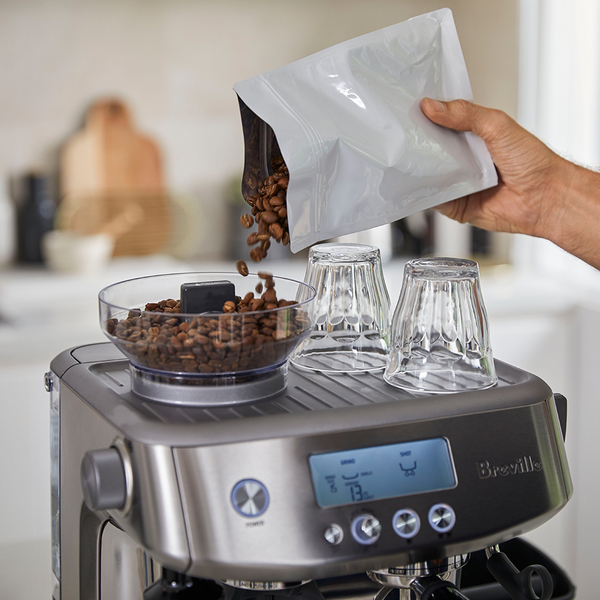Grinding espresso beans at home is becoming increasingly popular among coffee enthusiasts. The right grind can significantly enhance the flavor and aroma of your espresso. However, not all coffee grinders are created equal. It’s essential to understand the nuances involved in grinding espresso beans. By exploring various grinder types, methods, and best practices, you can achieve café-quality espresso from your kitchen.
Understanding Espresso Grinding
The Importance of Grind Size
Grind size plays a crucial role in the extraction process of espresso. Essentially, it directly impacts the taste and strength of your brew. If the grind is too coarse, your espresso may taste weak or bland. Conversely, a grind that is too fine can result in an overly bitter flavor. Therefore, finding the perfect balance is vital. Additionally, the grind size influences how quickly water flows through the coffee grounds. This, in turn, affects the overall extraction time. A precise grind size allows for a more controlled extraction process, leading to a more flavorful shot.
The Mechanics of Grinding
Understanding how coffee grinders work is essential for any espresso lover. Most coffee grinders operate using blades or burrs. Blade grinders chop the beans randomly, leading to uneven grind sizes. This inconsistency can cause irregular extraction during brewing. On the other hand, burr grinders crush beans between two metal or ceramic plates, resulting in a uniform grind. Achieving uniformity is essential for a balanced flavor profile. Therefore, a burr grinder is usually preferred for espresso. It consistently produces the fine grind required for optimal espresso extraction.

Choosing the Right Grinder
Types of Coffee Grinders
Before you can grind your espresso beans, you need to select an appropriate grinder. There are primarily two types: blade grinders and burr grinders. Blade grinders are often less expensive and easily accessible. However, they do not provide the consistency required for high-quality espresso. Burr grinders come in two variations: flat and conical burrs. Both types can produce a fine grind; however, they have distinct characteristics. Flat burrs generally yield uniform grounds but may generate more heat. Conical burrs are often quieter and create less heat, preserving flavor integrity.
Cost Considerations
When choosing a coffee grinder, consider your budget. There are various options at multiple price points. Entry-level burr grinders provide a decent start for those new to grinding espresso beans. However, investing in a higher-quality grinder can significantly enhance your espresso experience. Prices can range from $50 to over $500, depending on the brand and features. High-end grinders often come equipped with advanced settings, allowing for more precise control over the grind size. Thus, while it’s possible to find budget-friendly options, investing in a high-quality grinder can be a worthwhile decision.
Grinding Techniques for Espresso
Preparing the Beans
Before grinding, it’s important to prepare your beans properly. Start by measuring the amount required for a single or double shot of espresso. Typically, this ranges from 14 to 18 grams of coffee, depending on your taste preferences. Always use fresh beans for the best results. Storing beans in an airtight container can help preserve their aroma and flavor. Additionally, consider using beans roasted within the last few weeks. Stale beans can negatively impact the taste of your espresso, resulting in a lackluster experience.
The Grinding Process
Once your beans are weighed and ready, it’s time to grind. Adjust your burr grinder to a fine setting, suitable for espresso. Then, initiate the grinding process. It’s crucial to grind your beans just before brewing. This ensures maximum freshness and flavor. Generally, a fine grind for espresso should resemble the texture of granulated sugar. If you notice large chunks, continue grinding. Once you achieve the desired consistency, you can proceed to brew your espresso immediately.

Ensuring Consistency
The Role of Calibration
To ensure a consistent espresso experience, calibrating your grinder is essential. This means adjusting the grind size according to the type of beans and brewing method. With time and experimentation, you can determine the ideal settings for your preferences. Regularly check the grinder’s performance, as wear can alter grind consistency. Calibrate every so often, especially after changing coffee bean types.
Using a Scale
Another way to enhance consistency is by using a scale to measure your coffee grounds. Using a scale allows you to maintain the right coffee-to-water ratio. This precision is crucial in espresso brewing. Weighing your coffee before grinding ensures each shot has the correct amount. A consistent weight leads to a consistent flavor. Therefore, investing in a good kitchen scale can pay off in your espresso journey.
Common Mistakes to Avoid
Over-Grinding
One common mistake is over-grinding your espresso beans. Doing so can lead to a very fine powder, which may choke your espresso machine. Overly fine grounds can create excessive resistance when water flows through them. This may cause your shots to extract too slowly. It could leave you with an overly bitter or burnt-tasting espresso. To avoid this, continuously test and adjust your grind size until you find what works best.
Neglecting Temperature Control
The temperature of your grinder can also affect your espresso. When you grind coffee, friction generates heat, which can alter the flavor. If the beans heat up too much during grinding, they may lose some essential oils. Therefore, consider grinding in short intervals and allowing the grinder to cool. This practice helps preserve the flavor integrity of the beans. Additionally, don’t forget that freshly roasted beans can give a distinct temperature profile. Therefore, monitoring this aspect can greatly enhance your brewing experience.
Pros and Cons of Using a Coffee Grinder
Using a coffee grinder for grinding espresso beans has both advantages and disadvantages. Understanding these can help you make an informed decision.
Pros of Using a Coffee Grinder
One significant advantage is convenience. Most coffee lovers already own a coffee grinder. Thus, you don’t have to buy an additional machine. Additionally, coffee grinders are generally more affordable than dedicated espresso grinders. This can be a lifesaver for budget-conscious coffee enthusiasts. Furthermore, many grinders allow you to experiment with grind settings. This trial-and-error approach can deepen your understanding of coffee brewing.
Cons of Using a Coffee Grinder
Despite the advantages, there are some downsides. As previously mentioned, blade grinders often produce uneven grinds. This can lead to subpar espresso quality. In addition, the adjustment process may be challenging. Some grinders lack the finer grind settings necessary for good espresso. Therefore, investing in a quality burr grinder could ultimately lead to a better espresso experience.

Tips for Perfecting Your Espresso
Experiment with Different Beans
To truly enjoy the espresso experience, try experimenting with different coffee varieties. Understanding how each bean type interacts with the grind size and brewing method is essential. Various beans have different flavor profiles, acidity levels, and aromas. Therefore, adjusting your grind based on the type of coffee can bring out unique flavors. For example, a fruity Ethiopian bean may shine with a slightly coarser grind, while a rich Brazilian bean might require a finer touch.
Maintain Your Grinder
Finally, maintaining your grinder is crucial for long-term performance. Coffee oils and residues can accumulate over time, affecting the taste. Regularly clean the grinder according to the manufacturer’s recommendations. Some grinders come with cleaning brushes, while others require disassembly. Additionally, consider running uncooked rice through the grinder occasionally. This can help remove excess oils and ensure a clean grind. Proper maintenance not only prolongs your grinder’s lifespan but also assures consistently great-tasting coffee.
Conclusion: Brewing Your Perfect Espresso
In conclusion, grinding espresso beans at home can significantly elevate your coffee experience. The grind size, type of grinder, and techniques employed directly affect the flavor and quality of your brew. By investing time in understanding your grinder, experimenting with various beans, and honing your techniques, you can create delightful espresso right in your kitchen. Remember, the path to mastering espresso is not a race; it’s a rewarding journey that involves continuous learning. With patience and dedication, you will savor every sip of your homemade espresso. Happy brewing!
